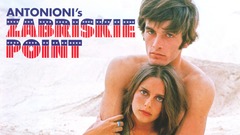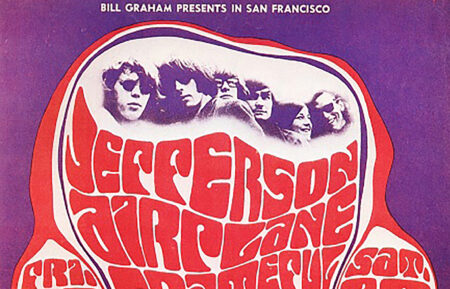Jerry Garcia

Musician • Songwriter • Singer
Birth Name: Jerome John Garcia
Birth Date: August 1, 1942
Death Date: August 9, 1995 — 53 years old
Birth Place: San Francisco, California
Bands: Grateful Dead
As one of the founding members and main figurehead of the Grateful Dead, guitarist and singer Jerry Garcia helped carry the torch of the 1960s counterculture for over three decades while inadvertently becoming a cultural icon whose legendary band became one of the highest-grossing touring acts of all time. Through the band's many years of success, Garcia remained deeply dedicated to playing music, often branching out in numerous directions outside of the Grateful Dead with various entities that included the Jerry Garcia Band, as well as other offshoots and collaborations with a wide array of musicians.
By blending such diverse styles as rock, folk, bluegrass and jazz, Garcia became noted for his highly distinctive style of playing that generated swirling guitar solos and unusual chord voicings steeped in improvisation. Because of this, Garcia stood out among his more mainstream contemporaries while happily remaining on the fringes of popular music. With the release of their twelfth studio album, In the Dark (1987), which featured their only Top 10 single, "Touch of Grey," the Grateful Dead finally achieved mainstream success, resulting in a huge influx of fans, though such popularity came at a price of swelling crowds to almost unsustainable levels. Although he died on Aug. 9, 1995, after suffering a heart attack in his sleep, there was no doubt that Garcia left an undeniable mark upon music that generated generations of new fans well after his death.
Born on Aug. 1, 1942, Garcia was raised by his father, Jose, a retired musician-turned-bar owner, and his mother, Ruth, who helped his father operate their business. Named by his parents after composer Jerome Kern, Garcia was exposed to a musical environment from the start and began taking piano lessons at a young age. But he was also profoundly influenced by a series of traumatic events that occurred early in his life. When he was just four years old, Garcia lost part of his middle finger while helping his older brother, Cliff, chop wood. Less than a year later, he lost his father in a drowning accident while he was fly-fishing on a family vacation. Soon after, his mother took over his father's bar business and sent her son to live with his maternal grandparents. Encouraged by both his grandmother and a third grade teacher to delve into his creative side, Garcia began listening to country music and bluegrass, which eventually led to him learning to play the banjo. By the time he reached high school, he began experimenting with drugs and getting into various kinds of trouble, including stealing his own mother's car, which led to a brief stint in the Army in 1960. But even the military was unable to tame the wayward Garcia, who frequently missed roll call and went AWOL. He received a general discharge toward the end of that year.
By this time, Garcia had invested himself in drawing and painting, while also learning how to play the guitar. Once again, however, he underwent a traumatic experience that altered the course of his life. Garcia was involved in a severe auto accident while speeding in a car with friends. He was thrown through the front windshield of the car and suffered a broke collar bone, while the driver was fatally injured and another friend severely hurt. Garcia suddenly got serious about life and began practicing music in earnest, even at the cost of his other artistic pursuits. He delved into the local art and music scene with close friend, Robert Hunter, who later went on to become the Grateful Dead's primary lyricist. While teaching acoustic guitar and banjo and appearing in various bluegrass outfits, Garcia met young high school dropout, Bob Weir, and soon formed the folk band Mother McCree's Uptown Jug Champions with blues singer Ron "Pigpen" McKernan. In 1965, the band added Phil Lesh on bass and Bill Kreutzmann on drums, switched to electric instruments and became The Warlocks. But upon realizing there was another band performing under that name, the group searched for another moniker, leading Garcia to open a dictionary and come across an entry for Grateful Dead, a folktale common in many cultures about a corpse seeking the generosity of a stranger in order to get a proper burial. Despite few in the band liking the name, it somehow managed to stick.
Garcia and his band mates took up residence in the Haight-Ashbury neighborhood in San Francisco, where the burgeoning counterculture movement of the late-1960s formed. Having developed their sound at the so-called Acid Tests conducted by author and Merry Prankster, Ken Kesey, the Grateful Dead began accumulating a following while developing strong ties with other notable bands from ther era, including Janis Joplin and Jefferson Airplane. Though the band moved out in mid-1967, after the influx of hippie wannabes flooded the neighborhood, the band became indelibly entwined with the area and city at large. Meanwhile, the Grateful Dead became known for their mind-bending exploratory live shows which featured an eclectic mix of rock, jazz, bluegrass, folk and psychedelia that was strung together by long stretches of musical improvisation. At the center was Garcia, whose swirling guitar solos and endearing vocals became one of the highlights of the band's live experience. Despite their popularity in and around the Bay Area, the Grateful Dead received little airplay and sold few albums, which included their self-titled debut in 1967, the exploratory Anthem of the Sun (1968), Aoxomoxoa and their first live release, Live/Dead (1969), which featured a top-shelf version of their signature song, "Dark Star."
The Grateful Dead blew their chance for further recognition by performing poorly at Woodstock in 1969, thanks to severe weather conditions and faulty electrical wiring. But they began breaking into the mainstream with two well-received albums, American Beauty (1970) and Working Man's Dead (1970), both of which featured a stripped-down style and more focused song writing. It was during the recording of American Beauty that Garcia suffered further tragedy, when his mother, Ruth, was in a car accident that left her in the hospital for weeks, ending in her death within a month. That year was also marked by a drug bust in New Orleans that claimed most members of the band and part of their crew, though Garcia managed to avoid the arrest by not being there at the time. Meanwhile, the band toured constantly across the country and even ventured over to Europe in 1972, where they arguably had one of their most successful tours, documented in the popular live release Europe '72 (1972). Prior to their journey across the Atlantic, the Grateful Dead added drummer Mickey Hart to the lineup, only to lose him in 1971 after learning that his father had embezzled money from the band. But after the tour, further tragedy struck when founding member, Ron McKernan died from complications due to alcohol abuse after leaving the band the following year because of his rapidly deteriorating health.
In 1974, following relentless touring that resulted in some of their most exploratory and dynamic live performances, the Grateful Dead went on temporary hiatus shortly after Hart rejoined the band. Though they released albums during that time, most notably Blues for Allah (1975), the band largely focused on side projects. Garcia formed the aptly named Jerry Garcia Band, which performed both originals and a vast array of cover songs, and became the most important and lasting of his solo projects. With the band resuming touring duties in the summer of 1976, Garcia also began working on editing footage shot during their five-night stand at San Francisco's Winterland Ballroom right before their hiatus, which became their one and only theatrically released film, "The Grateful Dead Movie" (1977). No stranger to controlled substances, the stress of trying to get the movie together led Garcia to begin using cocaine and eventually heroin. In a short span of time, he became a full-fledged addict who battled on and off with his problem until the end of his life. Meanwhile, Garcia had begun drifting away from his second wife, Caroline "Mountain Girl" Adams, with whom he had two daughters, and started a brief relationship with Deborah Koons.
For the second half of the decade, the Grateful Dead released the albums Terrapin Station (1977) and Shakedown Street (1978), while maintaining a heavy tour schedule that raced from one end of the country to the other and back again, all the while being tailed by a hardcore group of fans known as Deadheads, who formed a sort of traveling circus that followed the band from city to city. But by the time Garcia entered the 1980s, his addiction to heroin began causing considerable problems to both his health and his music. Garcia seemed to age 10 years in a short span of time, while starting to lose control of his playing abilities. Not to mention the band failed to record another album, following the ill-received Go to Heaven (1981). Year in and year out, the Grateful Dead played concert after concert, as their legion of fans swelled, attracting new members from younger generations looking for adventure and copious amounts of drugs outside the mainstream. Even though the band also partook in various substances, Garcia's problems were serious enough for them to stage an intervention in 1984. Though he agreed to check himself into rehabilitation, Garcia was arrested in Golden Gate Park in early 1985 for drug possession.
In 1986, Garcia collapsed into a diabetic coma that was brought about by poor diet, being overweight and years of drug abuse. He awoke five days later and spent the next several months relearning how to play guitar. But in no time at all, Garcia was fully recovered and in vibrant health, having temporarily kicked his heroin habit, and rejoined the Grateful Dead by the end of that year. With renewed vigor, the band entered the studio for the first time in six years and recorded In the Dark (1987), which became the biggest selling album of their career. The album featured several songs the band had been playing live for five years, including the hit single "Touch of Grey," which became their only Top 10 hit, thanks to heavy play of the subsequent music video on MTV. Because of their newfound popularity, the Grateful Dead attracted a new generation of fans that pushed concert attendance to the breaking point, forcing the band to play large stadiums for their summer tours as a matter of course, much to the dismay of the older fans. Meanwhile, the band recorded Built to Last (1989), a less-successful follow up to In the Dark that featured the songs "Foolish Heart" and the title cut. Built to Last proved to be the band's last studio effort.
The following year, tragedy struck the band anew when their fourth keyboardist, Brent Mydland, died from an overdose after injecting both cocaine and heroin into his system. Garcia, who himself had lapsed back into drug use in 1989, took the loss particularly hard. In 1991, the band again staged an intervention, but an angry Garcia stormed out of the meeting. He later agreed to attend a methadone clinic to overcome his addiction. The following year, Garcia suffered from extreme exhaustion and forced the Grateful Dead to cancel their fall tour. After hearing from a doctor that he would likely die in the next few years if he failed to shape up, Garcia dropped weight and began scuba diving to get in shape. He also resumed touring with renewed vigor, while also allowing Stonehenge, Ltd to use his airbrush art work to create a line of neckties that became hot sellers in numerous department stores. But as quickly as he recovered from his ailment in 1992, Garcia once again began to regress. Meanwhile, in 1994, he resumed relations with Deborah Koons and the pair married early that year. In the next year and a half, Garcia's health went into steep decline, leading to serious physical and mental deterioration that prompted him to turn down the volume of his own guitar because of how poorly he played.
Following a disastrous summer tour in 1995, Garcia recommitted himself to cleaning up his act once more. But his efforts proved to be too late. After a two week stay at the Betty Ford Clinic in July, Garcia checked into the Serenity Knolls Center for further treatment. On Aug. 9, 1995, just nine days after his 53rd birthday, Garcia died after suffering a heart attack in his sleep. When news broke, tens of thousands gathered in various parks across the country to spontaneously mourn his passing, realizing through their shock that an era had ended, while Deadheads from all walks of life - including celebrities, U.S. senators and even President Bill Clinton - voiced their grief. While the band carried the musical torch in one form or another, Garcia's last wife, Deborah Koons, waged war with his previous wife, Caroline Adams, in a legal battle over his estate that played out on Court TV. Regardless of the relative quiet passing, Garcia remained a cultural icon whose influence resonated profoundly in the music community, almost singlehandedly spawning the jam band scene while continuing to inspire new generations of fans.
Credits
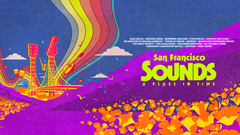
San Francisco Sounds: A Place In TimeStream

Grateful Dawg

Hells Angels Forever

Black Oak Conspiracy
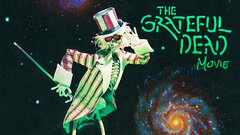
The Grateful Dead MovieStream

The Grateful Dead MovieStream

The Grateful Dead MovieStream
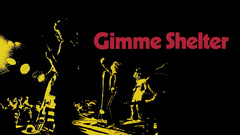
Gimme ShelterStream
